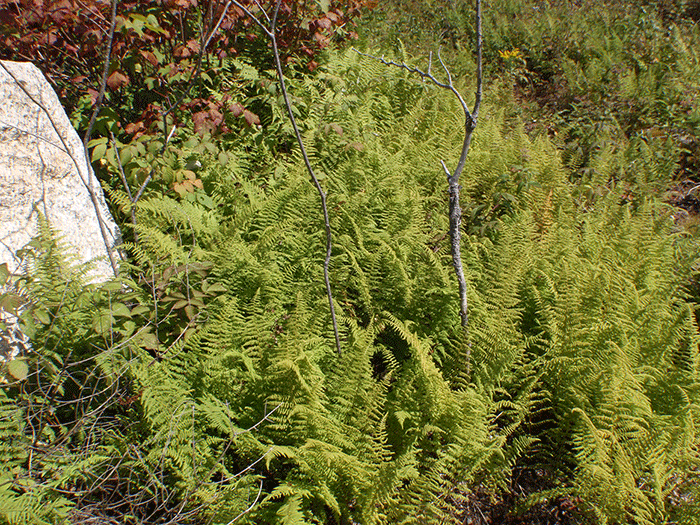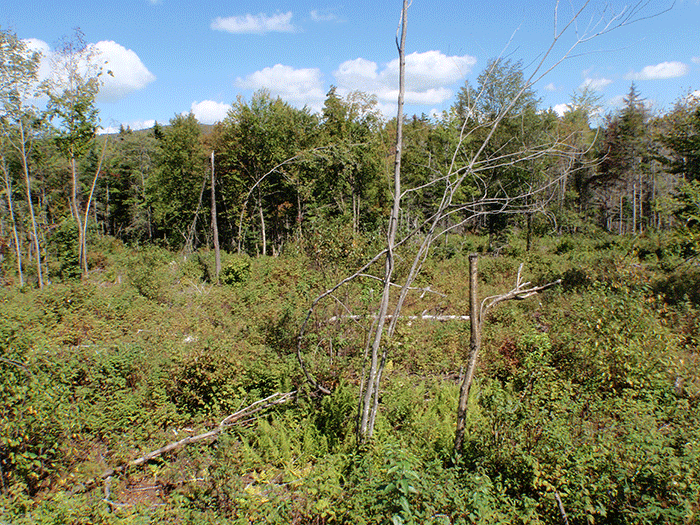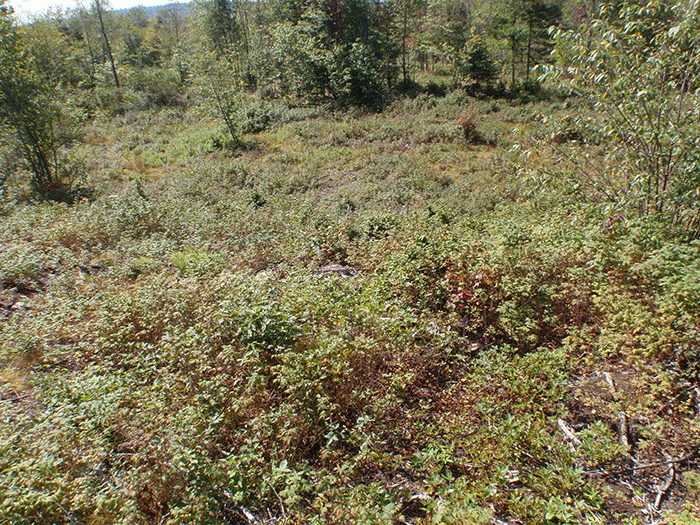The 18,000-acre Kushaqua Conservation Easement tract is home to some of the heaviest forest clearcutting in the Adirondack Park. The current owner of the tract’s “forest management” rights is Lyme Timber Company, which owns over 150,000 acres across the Adirondacks. Lyme has undertaken a series of clearcuts that are non-jurisdictional and do not require a permit from the Adirondack Park Agency (APA). These clearcuts avoid APA jurisdiction because they are either less than 25 acres in individual size and are surrounded by a 300-foot buffer area (which cannot be cut for 10 years) or the company leaves enough residual trees to make the forest clearcut not an official clearcut.
Under state-owned conservation easements, the “development” rights (which will never be used) and various “recreation” rights are held by the State of New York. The Kushaqua easement is shared recreationally by some 33 leased hunting camps, which pay annual rental fees to Lyme Timber Company for the opportunity to utilize a small 500 square foot cabin with an exclusive 1-acre envelope it. The leaseholders are get certain exclusive motor vehicle use rights on the tract. The general public is allowed widespread access to the easement lands for a variety of recreational activities subject to approval of a Recreation Management Plan (RMP). The “forest management” rights are owned by Lyme Timber Company.
The APA issued only a few clearcutting permits in its first 40 years, but has issued a half dozen in the last two years, completing these permits in record time — just about two months. This is a stunning turnaround, but shows a heightened determination by the various timber management companies to use forest clearcutting as a core part of its management practices.
The Adirondack Park is in the midst of a new era of clearcutting — both those that receive permits by the APA and the many others that are done without permits. A major question in these clearcutting days is whether or not this is what the public expected when the State of New York invested hundreds of millions of dollars in purchasing conservation easements.
Protect the Adirondacks has protested the increasing use of forest clearcutting in the Adirondack Park on state-held conservation easement lands. We see this practice as disruptive and destructive to forest health and a short-term management program meant to extract the maximum commercial value of the forest while preventing the development of a high value long-term northern hardwood forest that can support a sustainable secondary value added woods products manufacturing industry in the Adirondack Park. PROTECT will continue to actively monitor clearcut across the Adirondacks and intervene in permitting reviews.
The pictures below are a sample of part of the Kushaqua landscape.
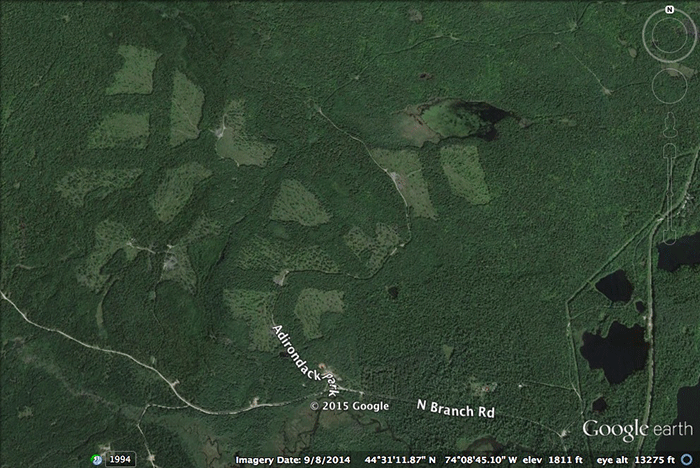
The Kushaqua tract has received some of the heaviest clearcutting of any conservation easement tract in the Adirondacks over the last two years by the Lyme Timber Company, which owns the forest management rights to the land. These clearcuts were all designed to avoid state jurisdiction and permit review.
The pictures below show various clearcuts within plan view of major recreational routes on the Kushaqua tract. A major question is about the viability of forest regeneration in these clearcut areas.
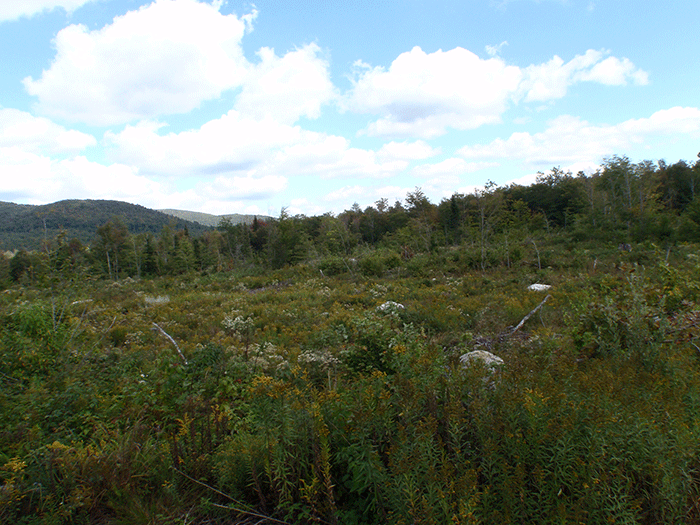
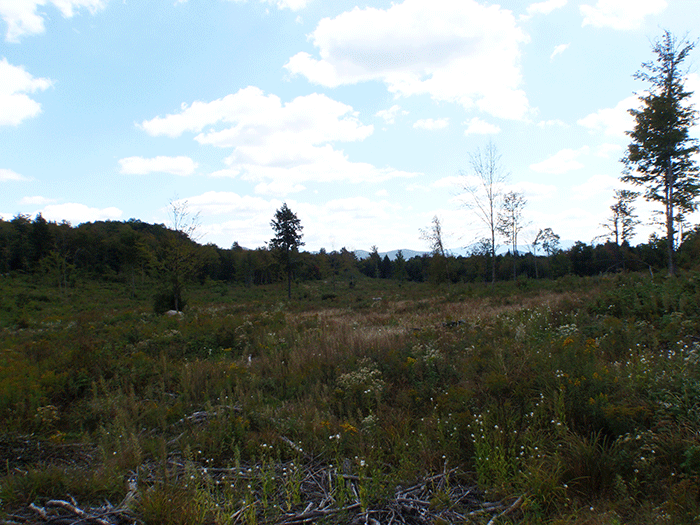
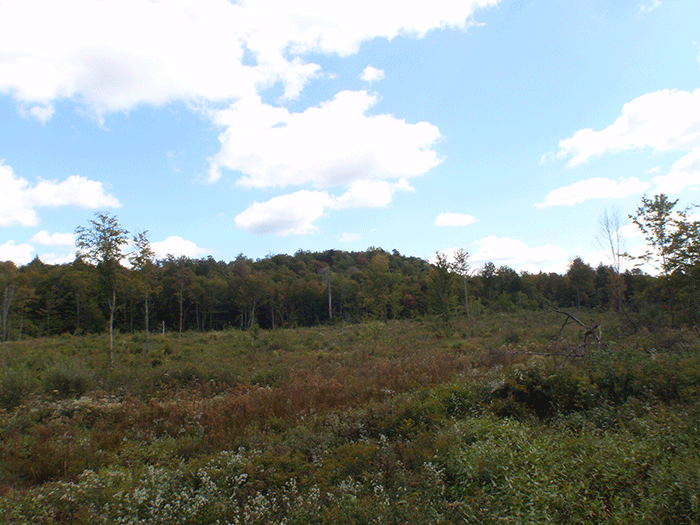
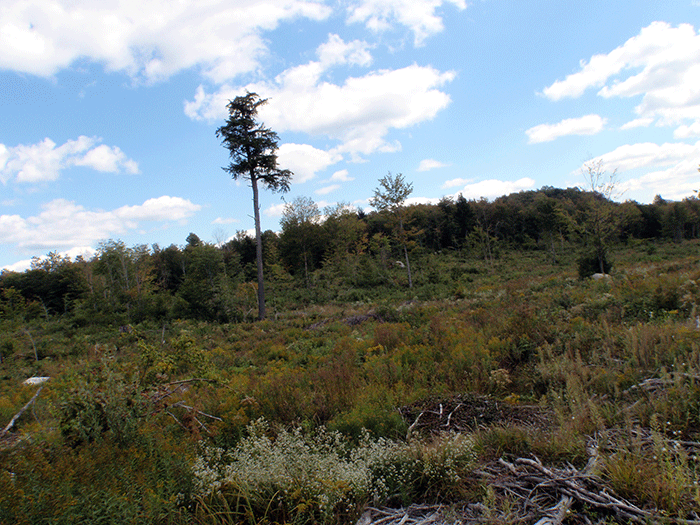
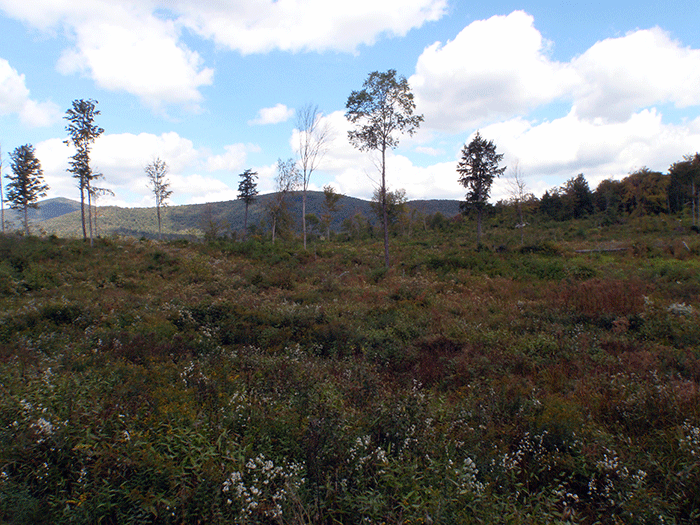
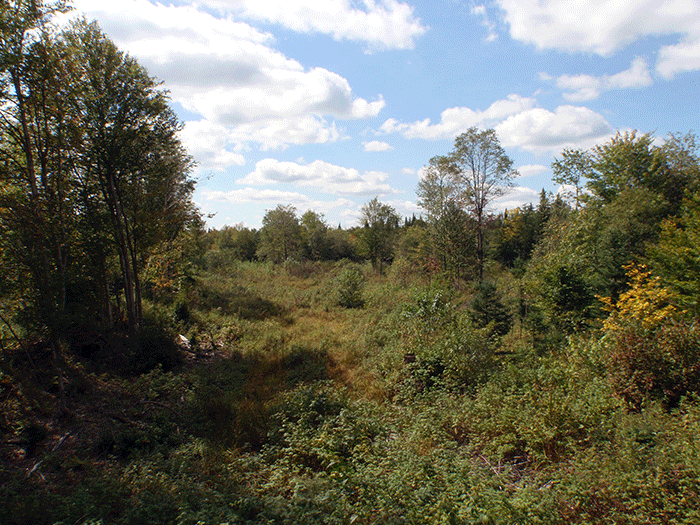
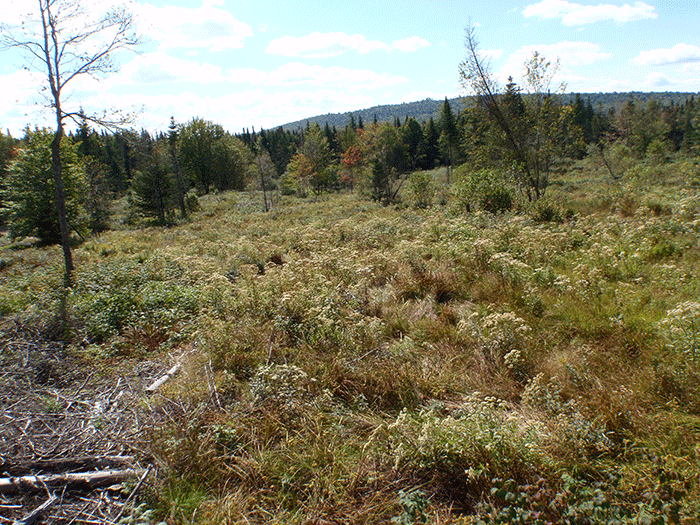
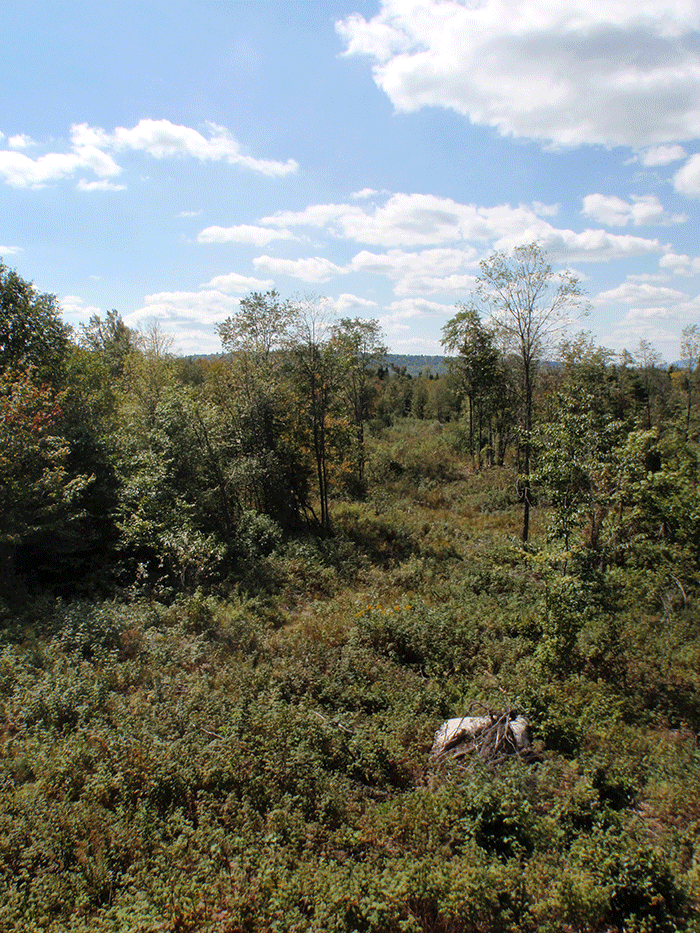
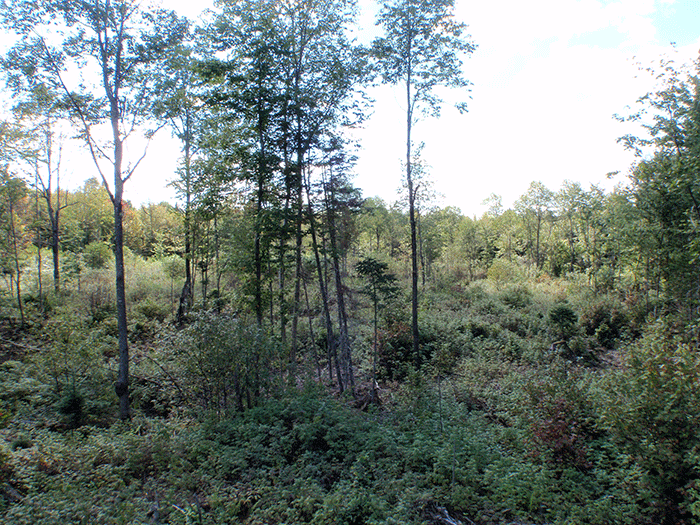
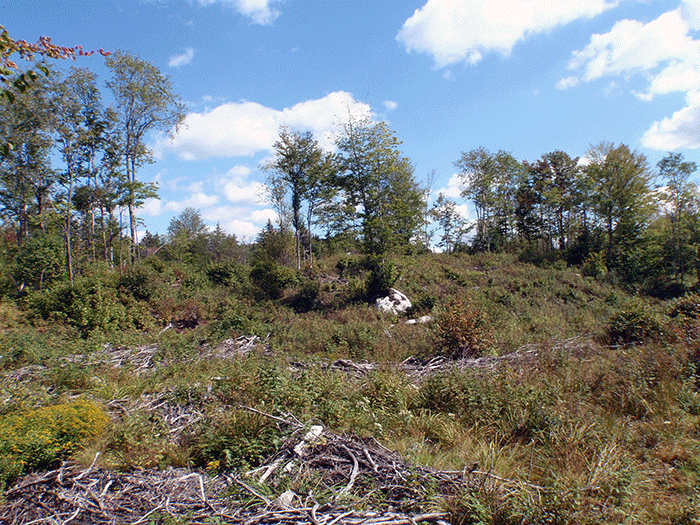
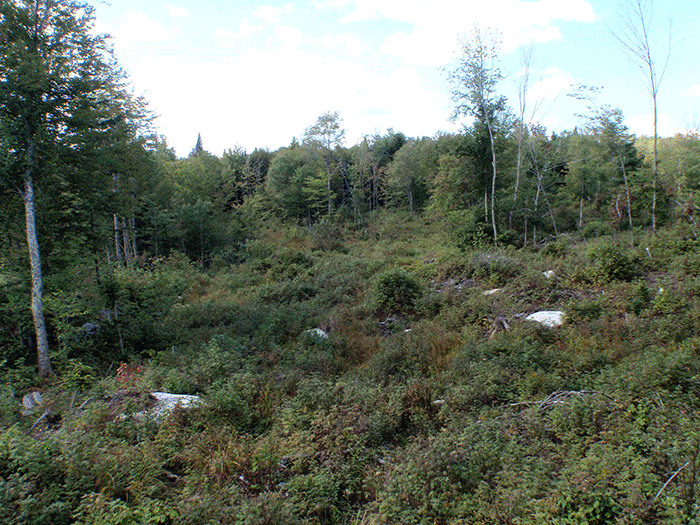
These types of forest clearcuts are undertaken ostensibly to improve the forest by changing the composition of the tree species. For example, forest clearcuts have been approved by the APA to reduce the overall amount of beech trees in stand from more than half the trees to something like a third as the forest regenerates. There is no tree planting in the Adirondacks and forest regeneration is supplied by the residual “seed” trees that remain standing or from the seed bank in the soil. Most agree that forest regeneration is a crap shoot. The overall composition may be changed or it may not. Further, clearcuts have failed because the cutting was too hard and the clearcut area was overtaken by ferns, wild blackberry, or various other thick shrubs that suppressed forest regeneration.
The pictures below show parts of the Kushaqua regeneration where the forest is being suppressed by thick growth of ferns and wild blackberry.
